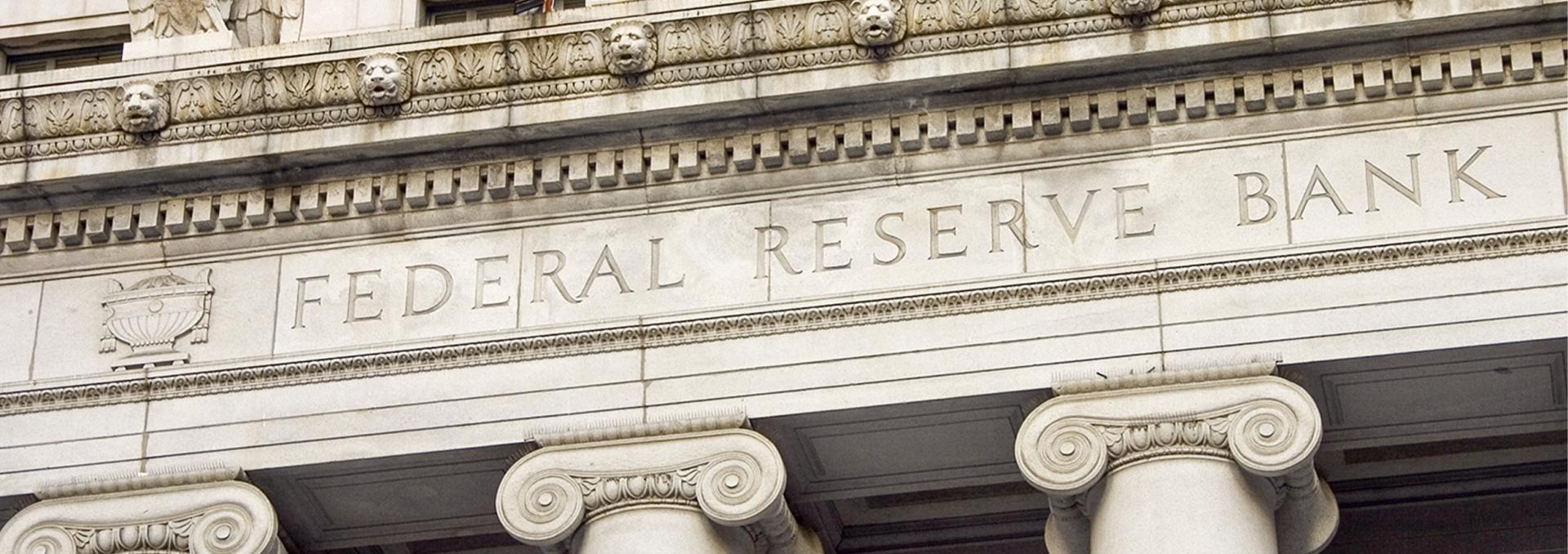
Are you interested in economic and financial news?
Bank Bonhôte is pleased to welcome you and puts at your disposal its finance experts.


–
USD/CHF | EUR/CHF | SMI | EURO STOXX 50 | DAX 30 | CAC 40 | FTSE 100 | S&P 500 | NASDAQ | NIKKEI | MSCI Emerging Markets | |
|---|---|---|---|---|---|---|---|---|---|---|---|
Latest | 0.80 | 0.93 | 12'887.48 | 5'720.71 | 24'186.49 | 8'068.62 | 9'649.03 | 6'827.41 | 23'195.17 | 50'836.55 | 1'389.99 |
Trend | 3 | 3 | 3 | 1 | 1 | 3 | 3 | 3 | 3 | 1 | 1 |
YTD | -12.28% | -0.60% | 11.09% | 16.85% | 21.50% | 9.32% | 18.06% | 16.08% | 20.12% | 27.43% | 29.24% |
(values from the Friday preceding publication)
–
The FOMC vote revealed an unusual split – nine votes to three. Among the dissenters, two governors wanted to hold policy, while an extremely dovish dove advocated for a whole half point. The FOMC is clearly at a turning point in the cycle, torn between persistent inflation and a rapid deterioration in labour-market conditions.
Economic growth projections were revised higher (+1.7% in 2025; +2.3% in 2026), while expectations for PCE inflation were lowered (2.9% in 2025; 2.4% in 2026). But the main message of the week was that Powell explicitly acknowledged that official labour statistics may be overstating job creation by nearly 60,000 positions per month, suggesting that the US job market may in fact already be close to a downturn.
This assessment was corroborated by the sharp rise in weekly initial jobless claims to 236,000 – the biggest single increase since 2020. In response to mounting liquidity strains, the Fed announced purchases of Treasury bills with maturities of less than three years, amounting to USD 40 billion per month. While procedural in nature, this measure should be taken note of, as it marks a discreet shift towards a more accommodative balance sheet.
Markets reacted logically, with the US 10-year yield easing towards 4.15%, the 2-year benchmark towards 3.54%, while the dollar gave up ground. US equities posted fresh highs, but there was clearly some rotation among sectors. AI-linked tech megacaps consolidated in the wake of Oracle’s earning report – a sign of heightened sensitivity to multiples among investors.
–
In the Eurozone, data confirmed the pedestrian but resilient growth trend. Third-quarter GDP rose by 1.4% year-on-year and 0.3% quarter-on-quarter, driven by Spain (+0.6%), France (+0.5%) and the Netherlands (+0.4%). German GDP remains at a standstill.
The most positive signal of the week came from Germany, which saw a 1.5% increase in factory orders in October, especially in aerospace and defence. The upswing remains sector-specific, however, insufficient to reverse the broader weakness in manufacturing.
Softening US yields last week supported equities, while the absence of a major inflation catalyst is curtailing expectations for any fast easing by the ECB.
The SNB kept its policy rate unchanged at 0% amidst a continued accommodative stance. Inflation forecasts were revised downwards (0.2% in 2025 and 0.3% in 2026), well below the official target. The SNB expects growth at around 1.5% in 2025 and 1% in 2026. In its view, the Q3 GDP contraction (-0.5%) was largely due to pharmaceutical deliveries to the US having been brought forward in anticipation of possible tariffs. The positive impact expected from the reduction in US tariffs on Swiss exports was also highlighted. The SNB stated that it will intervene in the forex market as needed, but considers a return to negative rates unlikely at this stage.
Last week the S&P 500 was off by 0.63%, and Nasdaq by 1.62%. In Europe, the Stoxx 600 was unchanged (-0.10%), as was the SMI (-0.07%).
This document is provided for your information only. It has been compiledfrom information collected from sources believed to be reliable and up to date, with no warranty as to its accuracy or completeness.By their very nature, markets and financial products are subject to the risk of substantial losses which may be incompatible with your risk tolerance.Any past performance that may be reflected in this documentis not a reliable indicator of future results.Nothing contained in this document should be construed as professional or investment advice. This document is not an offer to you to sell or a solicitation of an offer to buy any securities or any other financial product of any nature, and the Bank assumes no liability whatsoever in respect of this document.The Bank reserves the right, where necessary, to depart from the opinions expressed in this document, particularly in connection with the management of its clients’ mandates and the management of certain collective investments.The Bank is a Swiss bank subject to regulation and supervision by the Swiss Financial Market Supervisory Authority (FINMA).It is not authorised or supervised by any foreign regulator.Consequently, the publication of this document outside Switzerland, and the sale of certain products to investors resident or domiciled outside Switzerland may be subject to restrictions or prohibitions under foreign law.It is your responsibility to seek information regarding your status in this respect and to comply with all applicable laws and regulations.We strongly advise you to seek independentlegal and financial advice from qualified professional advisers before taking any decision based on the contents of this publication.